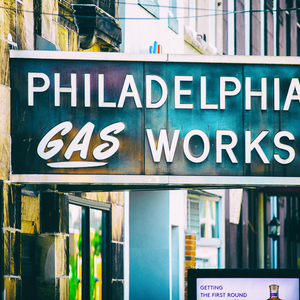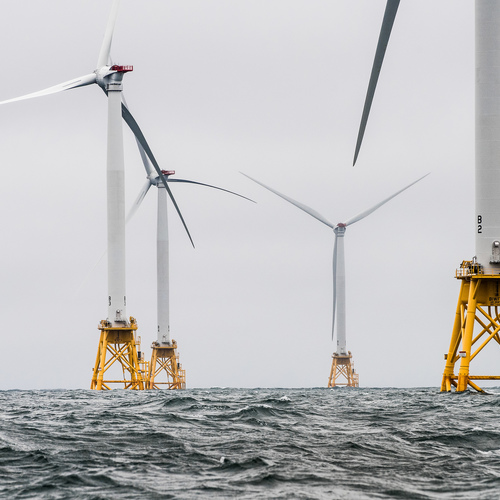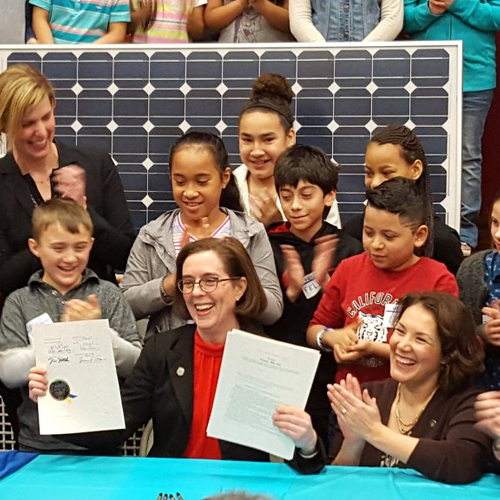
Image Credit: Brett Weinstein via Flickr
If the South were its own nation, it would be the seventh-largest carbon emitter in the world, according to the Southern Environmental Law Center (SELC). The region has more than 200 coal-fired power plants, and renewable energy policies in southern states are few and far between.
But now a handful of cities in the South are cleaning up their acts. Promises to make the switch to 100% renewable energy over the next few decades are coming in from Atlanta; from Columbia, South Carolina; and from Orlando, Sarasota, and St. Petersburg, Florida. In the midst of President Trump’s withdrawal from the Paris Climate Accord in the spring (and his administration’s more recent attempts to repeal the Clean Power Plan, among other dirty deeds), 41 cities around the country have committed to going 100% renewable to help fight climate change. (And five are already there: Kodiak, Alaska; Rock Port, Missouri; Burlington, Vermont; Aspen, Colorado; and Greensburg, Kansas.) Here’s how some of these southern stars are doing their part.
Atlanta
Atlanta jumped on the “Ready for 100” bandwagon in May after the City Council voted unanimously to electrify all buildings with clean power by 2035. “I think what it comes down to is you have to set ambitious goals to drive change,” says Megan O’Neil, energy programs manager for the Mayor’s Office of Resilience. It’s O’Neil’s job to develop a carbon-cutting strategy for the city by January. She doesn’t know exactly what the final plan will look like but says it will include improved energy and water efficiency and different types of power generation, such as solar.
Even as Atlanta hammers out the details of how to hit the 100% clean energy mark, policymakers know efficiency will play a huge role. Put simply, it is still the easiest, cheapest, and fastest way to lower energy consumption. Collectively, homes and other buildings devour the bulk of a city’s power and emit the most carbon, so getting owners to use better lightbulbs, update their heating and cooling systems, and more closely manage their electricity use goes a long way.
In fact, Atlanta’s existing program to improve building efficiency 20% by 2020 has already helped cut carbon dioxide pollution by 11,883 tons over the past six years — the carbon equivalent of an average-size car looping the planet 1,300 times.
Establishing a more diverse energy generation portfolio, however, will be trickier for the city. Currently, Atlanta derives less than 2% of its power from renewable sources, and few state-level policies exist to encourage such industries. Even so, the solar industry has shown promise in the sunny South. Today, Georgia Power has 900 megawatts of solar online and hopes to add 1,600 megawatts of renewable energy capacity over the next four years. It says 1,050 megawatts of that would likely come from utility-scale solar, which would be enough to power around 150,000 homes.
Asking residents to help
In the meantime, the Mayor’s Office of Resilience is drawing on the advice of a handful of energy wonks, including the Natural Resources Defense Council, the Southface Energy Institute, the Sierra Club, SELC, and the Greenlink Group, to make sure its renewable plan is affordable and flexible and serves everyone in the city.
Hearing from the people of Atlanta themselves is a good way to start, explains Matt Cox, founder of the Greenlink Group, a consulting firm that has developed a scientific model that simulates how energy grids can affect a city’s water use and economy, the quality of its air, and the health of its citizens. “We’re making the model accessible to everyone,” Cox says. “I think it’s a game-changer.”
Over the next few months, the Greenlink Group and others will crowdsource ideas and opinions on the city’s transition to clean energy through online surveys, town hall gatherings, and meetings with various stakeholder groups, like commercial builders and equity advocates. Through Greenlink’s model, Atlantans can watch how the city’s grid decisions would play out in their communities. They can see, for example, that for every $1 million spent on energy efficiency, seven jobs would be created (compared with three jobs if that money went instead toward business-as-usual power generation).
“A really interesting story behind the 100% clean energy goals is the power of people,” says Jay Orfield, a renewable energy analyst for NRDC. “It’s not just happening in the obvious cities like San Francisco, Burlington, and Boulder. Atlanta is now doing this. What if towns like Rome, Georgia, do the same thing? What if Valdosta does it, too?”
Columbia, South Carolina
In June, Columbia became the first city in South Carolina to commit to going all-in on clean energy. Like Atlanta, the city aims to achieve this by 2035. To help lay its plan, Columbia is on the hunt for funds ($100,000 to $500,000) to undertake an energy audit of municipal buildings and fleet vehicles such as police cars and buses. Again, energy efficiency measures will be the city’s low-hanging fruit, while ensuring better energy sourcing remains a challenge.
Committing to go fully renewable is one thing; doing it is another. “It’s very much like trying to eat an elephant,” says Heyward Harvin, chief advisor to Mayor Stephen Benjamin. One of the biggest barriers Columbia and other southern cities have is getting their utilities aboard the clean energy train. Jill Kysor, an SELC staff attorney working on clean energy and air, says utilities aren’t always keen on investing in programs, such as those that support rooftop solar or energy efficiency, because they can lead to lower electricity sales — especially in cities, their biggest customers. But clean grids and profitable utilities can coexist.
One solution to bridge the gap between a utility’s bottom line and falling electricity consumption is a green tariff. This allows customers to purchase all or a percentage of their power from renewable sources at a fixed rate. Utilities negotiate the price, allowing them to maintain their revenue stream while offering the types of energy their customers demand. Another option is to increase electric vehicle infrastructure, like charging stations — an opportunity for the utility to make money, encourage a new market for electricity, and build goodwill while doing so.
Orlando, Sarasota, and St. Petersburg, Florida
In August, Orlando joined two of Florida’s smaller cities, St. Petersburg and Sarasota, in pledging to go 100% renewable, promising to decarbonize by 2050. At this point, about 10% of the city’s electricity is renewable. That will need to increase dramatically for Orlando to reach its goal.
Like Atlanta and Columbia, Orlando is zeroing in on energy efficiency first, investing $17.5 million in upgrades — high-efficiency LED lighting; control sensors; and improved heating, ventilation, and air-conditioning systems — at 55 municipal buildings. This could save the city approximately $2.5 million per year. In addition, a 13-megawatt community solar farm, the city’s first, went online this month.
Such efforts — and achievements — in a region not typically known for progressive energy policies show the rest of the country that a citywide transition to a clean energy grid is a not an issue of if, but when.
Robynne Boyd is an independent journalist who writes for onEarth. This article was originally published by the Natural Resources Defense Council.
Weekly Newsletter
Get building science and energy efficiency advice, plus special offers, in your inbox.















5 Comments
I really wish Atlanta had jumped on this sooner and
with respect to multi-family. Over the last 10-15 years a dozen or so new high rise condominiums were built or are at some stage of construction and they're ridiculously inefficient.
First is the thermal bridging. These condos all have concrete balconies and act like one huge thermal bridge for the entire floor. They look like cooling fins on an air-cooled engine (i.e. Harley Davidson) and in the winter the interior side of these floors are cold..
Secondly issue is the floor to ceiling windows of these units. They're leaky and/or the solar heat gain is fierce. It's a shame when a utilities run over $300/mo for a 600 sqft efficiency.
John
At least they are in Atlanta. I remember working on drawings for a high-rise in Ottawa in the late '80s with the same concrete balcony detail. The thermal bridge was kept warm by a baseboard heater under the patio door!
Malcolm, i know thats a long
Malcolm, i know thats a long time ago, but might that have been Summerset Towers on Carling Avenue, my wife used to live there while we were dating, and that patio doors were all elevated approximately 8" with a baseboard heater below.
Ryan
I can't remember the exact address, but it was on O'Connor street. We used the same details as most other building at that time, so although I can't claim individual responsibility for your wife's utility bills, I share a group guilt.
The only debate I remember was whether the tenants could be trusted not to step on the baseboard heaters, or if they should have some protection. At least it had 6" walls with individual punched windows, rather than curtain walls that most do today.
Edit: It's at 311 O'Connor Street.
Things would be much simpler
Things would be much simpler and more accurate if we stopped talking about "energy efficiency" and used "carbon efficiency". Strictly speaking, the former is irrelevant to the environment.
Log in or create an account to post a comment.
Sign up Log in